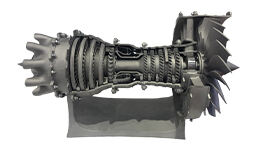How 3D Printing and Robotics are Transforming Smart Factories
Smart factories are the future of manufacturing, where digital technologies such as 3D printing and robotics enable more efficient, flexible, and sustainable production. In this article, we will explore how these two technologies are combining to create new possibilities and challenges for smart factories.
3D printing, also known as additive manufacturing, is a process that creates objects by depositing layers of material on top of each other, following a digital model. 3D printing can produce complex shapes and structures that are difficult or impossible to make with traditional methods, such as injection molding or machining. 3D printing can also reduce material waste, as it only uses the amount of material needed for the object, and can recycle the excess material.
Robotics is the field of engineering that deals with the design, construction, operation, and control of robots, which are machines that can perform tasks autonomously or with human guidance. Robotics can enhance the capabilities of 3D printing by providing more accuracy, speed, and flexibility. For example, robotic arms can move in multiple directions and angles, allowing 3D printing to create objects with different orientations and geometries. Robotic arms can also switch between different 3D printing heads, such as extrusion, laser, or jetting, to create objects with different materials and properties.
The combination of 3D printing and robotics can create smart factories that can adapt to changing customer demands, market conditions, and environmental factors. Smart factories can use 3D printing and robotics to produce customized and personalized products, such as medical implants, aerospace components, or consumer goods. Smart factories can also use 3D printing and robotics to optimize their production processes, such as reducing energy consumption, improving quality control, and minimizing downtime.
However, 3D printing and robotics also pose some challenges for smart factories, such as the need for skilled workers, the protection of intellectual property, and the regulation of safety and ethics. Smart factories need workers who can design, operate, and maintain 3D printers and robots, as well as analyze and interpret the data generated by them. Smart factories also need to ensure that their 3D printing and robotics technologies do not infringe on the patents, trademarks, or copyrights of other parties, or expose their own trade secrets. Smart factories also need to comply with the laws and standards that govern the use of 3D printing and robotics, such as the environmental impact, the product quality, and the human-robot interaction.
3D printing and robotics are transforming smart factories by enabling more innovation, efficiency, and sustainability. However, they also require smart factories to address the issues of skills, security, and regulation. By embracing the opportunities and overcoming the challenges, 3D printing and robotics can help smart factories achieve their full potential in the digital age.
Recommended Products
Hot News
-
3D Printing: The Key to Design Freedom and Sustainability in Smart Factories
2024-02-05
-
How 3D Printing and Robotics are Transforming Smart Factories
2024-02-05
-
How UNITECH 3D PRINTING (DONGGUAN) LIMITED (Dongguan Huilichuang 3D Technology Co.,Ltd) is Revolutionizing the 3D Industry with Multiple Printing Techniques
2024-02-05
-
UNITECH 3D PRINTING (DONGGUAN) LIMITED (Dongguan Huilichuang 3D Technology Co.,Ltd): A Pioneer in Diverse 3D Printing Solutions
2024-02-05

 EN
EN
 AR
AR
 FR
FR
 DE
DE
 IT
IT
 JA
JA
 KO
KO
 PT
PT
 RU
RU
 ES
ES


